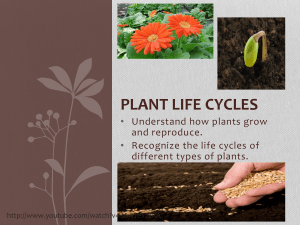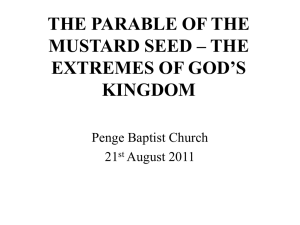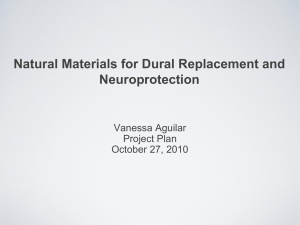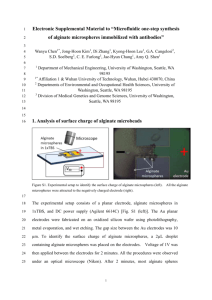ARTIFICIAL SEEDS - WordPress.com
advertisement
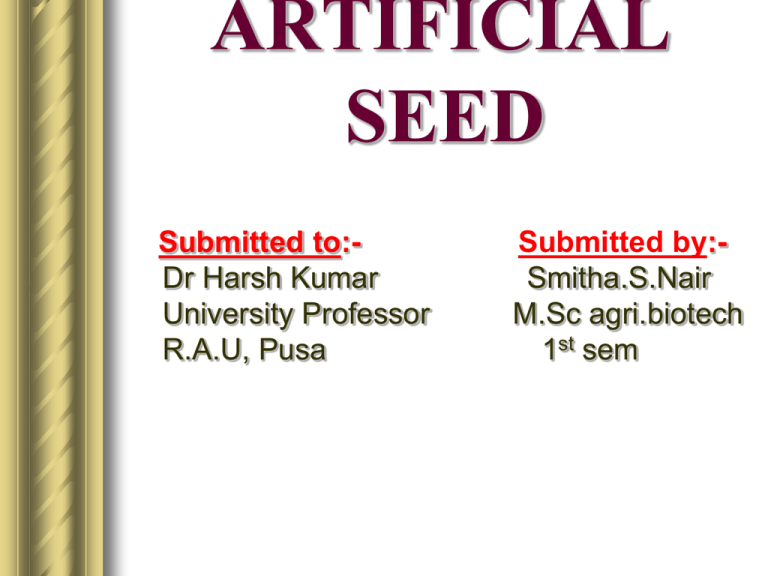
ARTIFICIAL SEED Submitted to:Dr Harsh Kumar University Professor R.A.U, Pusa Submitted by:Smitha.S.Nair M.Sc agri.biotech 1st sem INTRODUCTION Artificial seeds are encapsulated somatic embryos that can be used as seed & that posses the ability to convert into plant under in vitro and ex vitro condition. Somatic embryo’s are bipolar structure with both apical & basal meristematic region, which are capable of forming shoot & root respectively. TYPES OF ARTIFICIAL SEEDS 1)DESICCATED SYSTEM SE’s is 1st hardened to withstand desiccation & then are encapsulated in suitable coding material.SEs may be hardened either by treating/coating mature SE with suitable polymer followed by treated with ABA(improve germination of SE). Kim & Janicle 1st developed desiccated artificial seeds from SE of carrot.(5% solution of polyethylene oxide (polyox HYDRATED ARTIFICIAL SEEDS • • • • • Somatic embryos are enclosed in gels, which remain hydrated. Calcium alginate is most suitable. Hydrated artificial seeds are sticky & difficult to handle on a large scale &are dry rapidly in the open air.This problems can be solved by providing a waxy coating over the bead. However, hydrated artificial seeds have to be planted soon after they are produce. Redenbergh et.al(1986) develop hydrated artificial seeds by mixing SE of alfalfa, celery & cauliflower with sodium alginate followed by dropping into a solution of calcium chloride/nitrate to form calcium-alginate. Fig:-SE’s encapsulated in calcium alginate Artificial seeds make a promising techniques for propagation of plants, non seed producing plants,polyploids with elite traits and plants line with problems in seed propagation. Being clonal in nature the techniques cuts short laborious selection procedure of conventional recombination breeding. PROCEDURE FOR PRODUCTION OF ARTIFICIAL SEED Establish somatic Embryogenesis Mature SE Synchronized & singulate SE Mass Production of SE Standardization of Encapsulation Standardization of artificial endosperm. Mass production of synthetic seed. Green house & field planting. WHY ALGINATE WHY NOT AGAR ? • Alginate hydro gels are frequently selected as a matrix of synthetic seeds because of its moderate viscosity & low toxicity for SE & quick gellation & low cost. • AGAR is considered inferior to alginate with respect to long term storage. • Alginate choosen because it enhance capsule formation & protect SE’s against mechanical injury. POTENTIAL USE OF ARTIFICIAL SEED • Reduced cost of transplanting. • Carrier of adjuvant such as microorganism, plant growth regulators,pesticides,fungicides, nutrients & antibiotics. • Large scale monoculture. • Can be conceivably handle as seed using conventional planting equipment. Analytical tools •Production of large no of identical embryos. •Determination of role of endosperm in embryo development & germination. •Study of somaclonal variation. Works done in the field of production of artificial seed • In 1984 Redenbaugh et al.developed a technique for encapsulation of individual SE of alfalfa. • Molle et al.found that for the production of artificial seeds of carrot. • In alfalfa desiccation-tolerance of SE’s embryos was induced by exogenous application of ABA by Seneratna,Mckersie & Bowley. • Piccioni & Standerdi have described conversion of shoot buds of apple clonal rootstock M.26 encapsulated after an appropriate root induction treatment with IBA for 3- 6days. • Onay,Jeffree & Yeoman have reported that the encapsulated embryonic masses(Pistacia vera) recovered their original proliferative capacity after two months storage following two subculture. • Corrie & Tandon have reported that the encapsulated protocorms of Cymbidium giganteum gave rise to nutrient medium or directly to sterile sand & soil. ADVANTAGES • High volume, large scale propagation method. • Maintains genetic uniformity of plants. • Direct delivery of propagules to the field, thus eliminating transplants. • Lower cost per plantlet. • Rapid multiplication of plants. LIMITATIONS • Limited production of viable micropropagation. • Asynchronous development of SE. • Lack of dormancy & stress tolerance in SE. • Improper maturation of SE that makes them inefficient for germination and conversion into normal plants. CONCLUSION • Requirement for the practical application of the artificial seed technology is the largescale production of high quality micropropagule,which is at present a major limiting factor. • The Synthetic Seed Technology offers tremendous potential in micropropagation and germplasm conservation; however future research is need to perfect the technology so that it can be used on a commercial scale.



